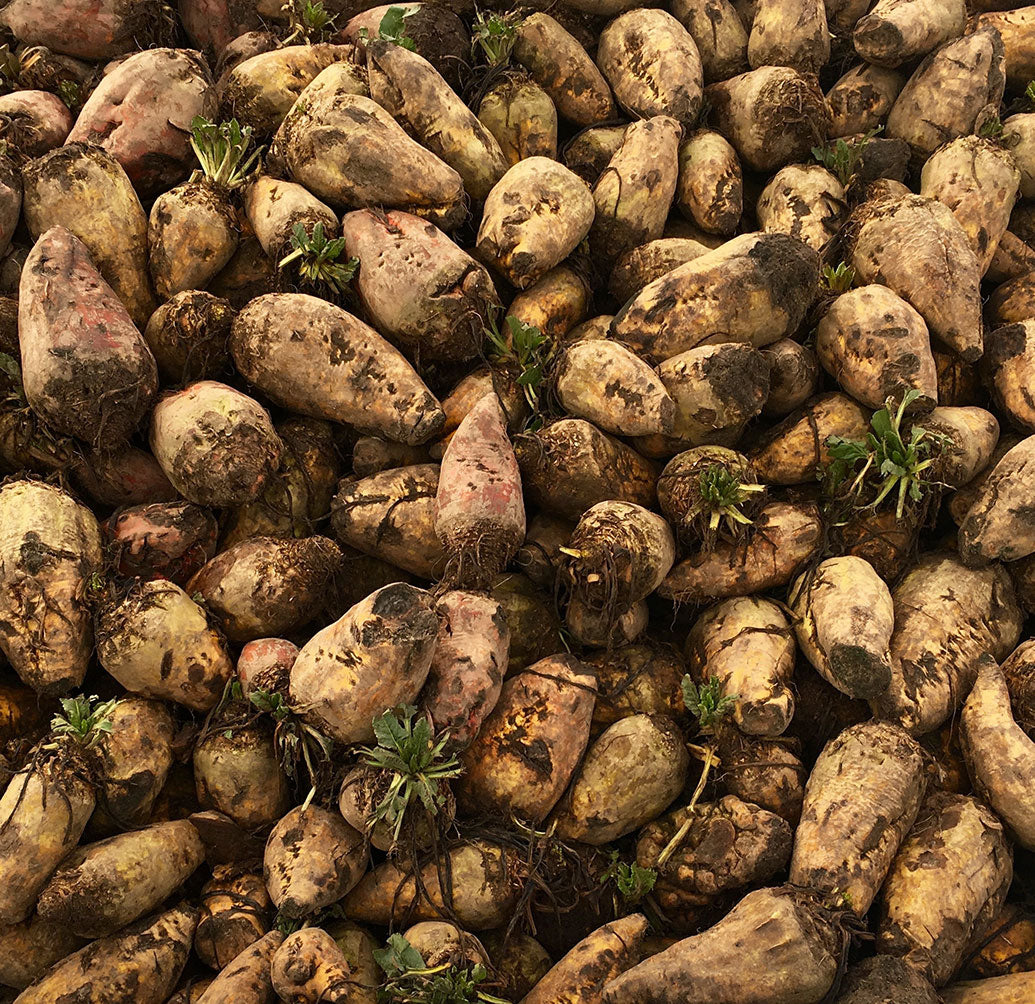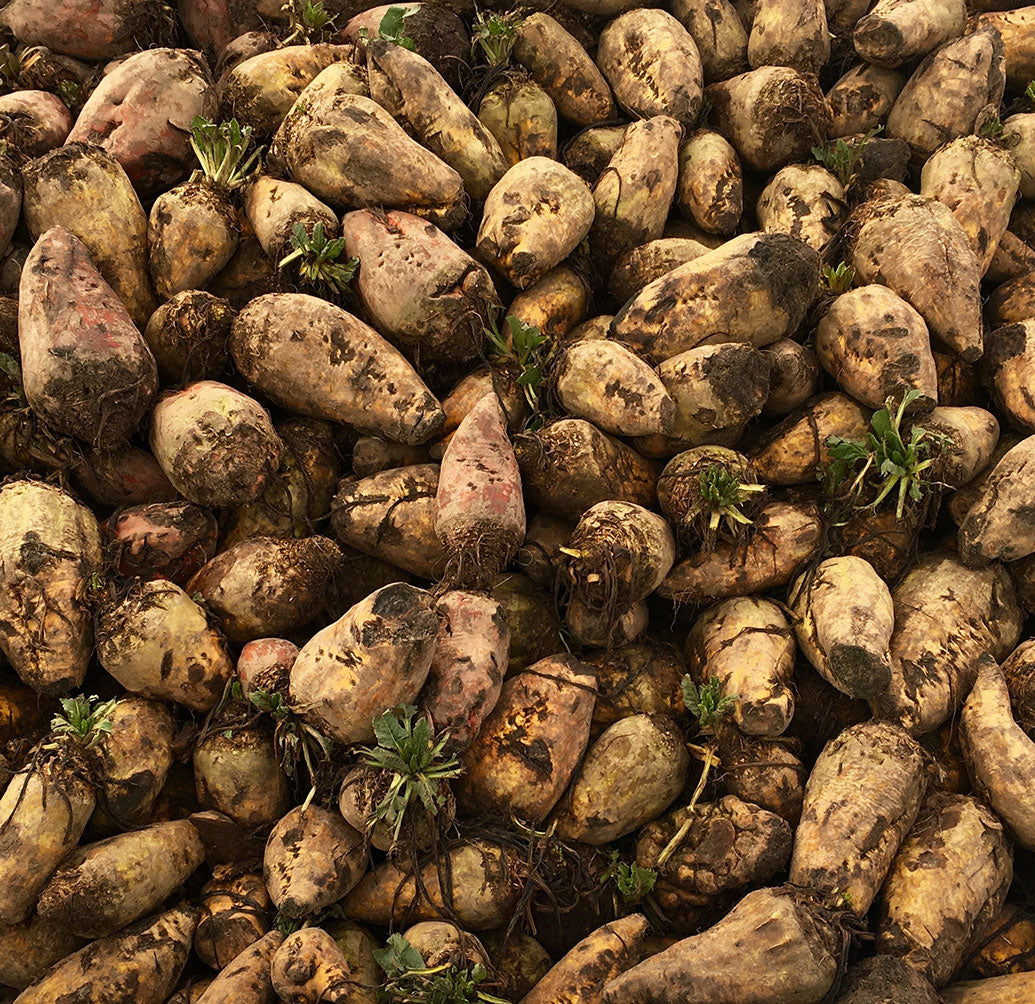Fodderbeet
Fodderbeet
- DM:18.0%
- Protein: 7.0%
- ME MJ/kg:13.8%
- Fibre: 6.0%
- Oil: 0.7%
- Ash: 6.0%
Couldn't load pickup availability
Can produce more dry matter / acre than cereal grains. A sugar rich energy feed for ruminants but the composition can vary. Soil contamination must be avoided to prevent digestive upsets as should excessive feeding; in severe cases this can cause hypocalcaemia and even death. The digestive upsets are due to excessive sugar in the rumen and / or mineral imbalance. Chopping enhances intakes and ruminants relish the root due to its succulence and sugar content.

Typical Analysis
| Dry Matter | 18.0 |
| Crude Protein | 7 |
| DCP | 6 |
| ME | 12.5 |
| Crude Fibre | 6 |
| Oil (EE) | 0.7 |
| Ash | 6 |
| NCGD | 87 |
| NDF | 19.5 |
| Starch | 2 |
| Sugar | 64.7 |
| Starch & Sugars | 66.7 |
| FME | 11.7 |
| Salt | 0.7 |
| Calcium | 0.3 |
| Total Phos | 0.25 |
| Av Phos | 0.2 |
| Magnesium | 0.15 |
| Potassium | 1.5 |
| Sodium | 0.3 |
Recommended feeding
(per head / day)
Limits to Usage
Fodderbeet should be well cleaned. If feeding tops they should be wilted to avoid metabolic and digestive upsets. Root tops can be associated with milk taint in dairy cows. High FME may limit inclusion.
Storage / Processing
Disclaimer
Feeding rates are estimates, and other factors, such as animal health and environment, can have a greater impact on how animals perform. There is no guarantee that animals will perform as expected if fed the suggested rates. Rations should be balanced to provide enough energy and protein for animals, and they should include enough forage to keep the rumen healthy. Animals also need access to fresh water at all times.
- Choosing a selection results in a full page refresh.
- Opens in a new window.
